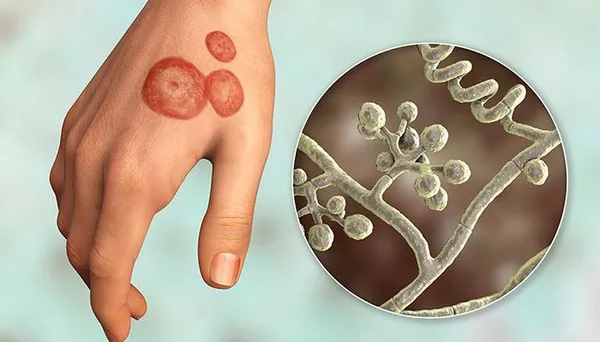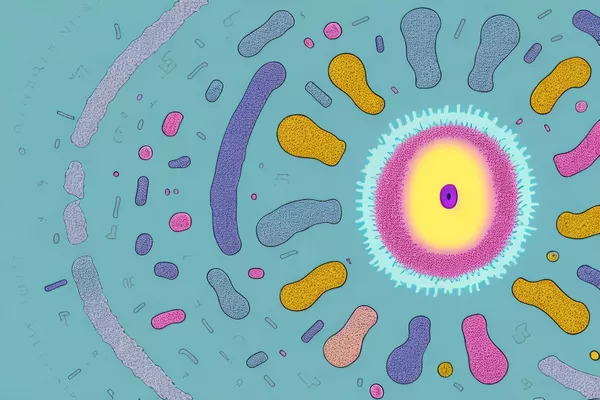Ringworm, despite its name, is not caused by worms but rather by a fungus. This fungal infection, also known as tinea capitis when it affects the scalp, can lead to hair loss in affected areas. Understandably, individuals afflicted by this condition often wonder about the permanence of the resulting bald spots. In this article, we delve into the intricacies of ringworm, its effects on the scalp, and the potential for permanent hair loss.
Understanding Ringworm and Its Effects on the Scalp
Ringworm of the scalp is a common fungal infection, particularly among children, although adults can also be affected. It is caused by various species of fungi known as dermatophytes, which thrive in warm, moist environments. These fungi invade the outer layer of the skin, including the hair shafts and follicles, leading to characteristic symptoms such as itching, redness, scaling, and hair loss in circular or patchy patterns.
The infection is highly contagious and can spread through direct contact with an infected individual, sharing contaminated items such as combs or hats, or even through contact with surfaces harboring the fungus. Due to its contagious nature, prompt treatment and preventive measures are crucial to curbing its spread.
The Course of Ringworm Infection and Hair Loss
When ringworm affects the scalp, it can lead to inflammation of the hair follicles, weakening them and causing hair breakage or loss. The characteristic bald patches associated with tinea capitis often result from this follicular damage. However, the extent of hair loss and the duration of bald spots can vary depending on several factors:
1. Severity of Infection: The severity of the ringworm infection plays a significant role in determining the extent of hair loss. Mild cases may only result in minimal hair shedding or thinning, while more severe infections can lead to larger bald patches.
2. Promptness of Treatment: Early detection and treatment of ringworm are essential in minimizing hair loss and preventing its spread. Timely intervention with antifungal medications can halt the progression of the infection and promote hair regrowth.
3. Individual Response to Treatment: Each individual may respond differently to treatment. While some may experience rapid improvement and regrowth of hair, others may require more prolonged treatment or may have residual bald spots even after the infection has cleared.
Treatment Options for Ringworm and Hair Regrowth
The primary goal of treating ringworm of the scalp is to eradicate the fungal infection and alleviate symptoms while promoting the regrowth of hair. Treatment typically involves the use of antifungal medications, which may be administered orally or applied topically, depending on the severity of the infection.
Oral antifungal medications such as griseofulvin, terbinafine, or itraconazole are often prescribed for more severe cases or when topical treatments prove ineffective. These medications work systemically to eliminate the fungus from the body, including the scalp and hair follicles.
Topical antifungal creams, lotions, or shampoos containing ingredients like ketoconazole, miconazole, or ciclopirox are commonly used for milder cases or as adjunctive therapy. These topical agents directly target the fungus on the scalp and help reduce inflammation and itching.
In addition to antifungal treatment, maintaining good scalp hygiene and avoiding factors that exacerbate fungal growth are essential for successful management of ringworm. This includes regular washing of hair and scalp with antifungal shampoos, avoiding sharing personal items, and keeping the scalp clean and dry.
The Potential for Permanent Hair Loss
While ringworm-induced bald spots can be distressing, the good news is that in most cases, hair regrowth is achievable with prompt and appropriate treatment. With effective antifungal therapy and proper management, the fungal infection can be eradicated, allowing the hair follicles to recover and resume normal hair growth.
However, in some instances, particularly in severe or prolonged cases of ringworm infection, permanent hair loss may occur. This can occur if the hair follicles are extensively damaged beyond repair or if scarring develops in the affected areas, a condition known as cicatricial alopecia.
Cicatricial alopecia results from the destruction of hair follicles and their replacement with scar tissue, which inhibits the regrowth of hair. This type of hair loss is irreversible, and affected individuals may require cosmetic interventions such as hair transplantation to restore a natural-looking appearance.
Conclusion
In conclusion, while ringworm-induced bald spots can be distressing, they are typically not permanent with appropriate treatment. Prompt diagnosis and initiation of antifungal therapy are crucial in minimizing hair loss and promoting hair regrowth. By following treatment recommendations and adopting good scalp hygiene practices, individuals affected by ringworm can expect favorable outcomes and restoration of hair growth in the majority of cases. However, in rare instances where permanent hair loss occurs, consultation with a dermatologist or hair specialist can provide guidance on available treatment options and cosmetic interventions to address the issue effectively.
























